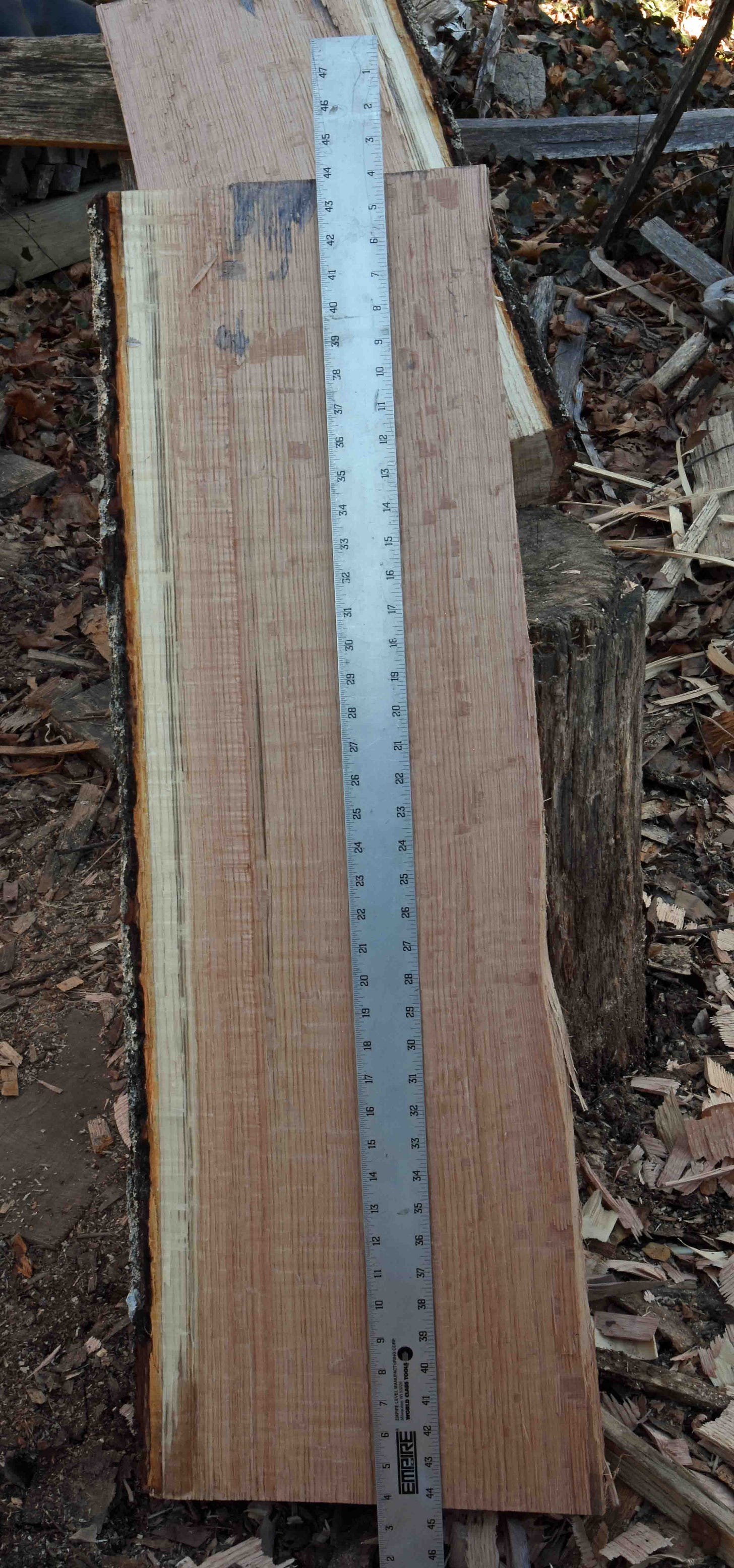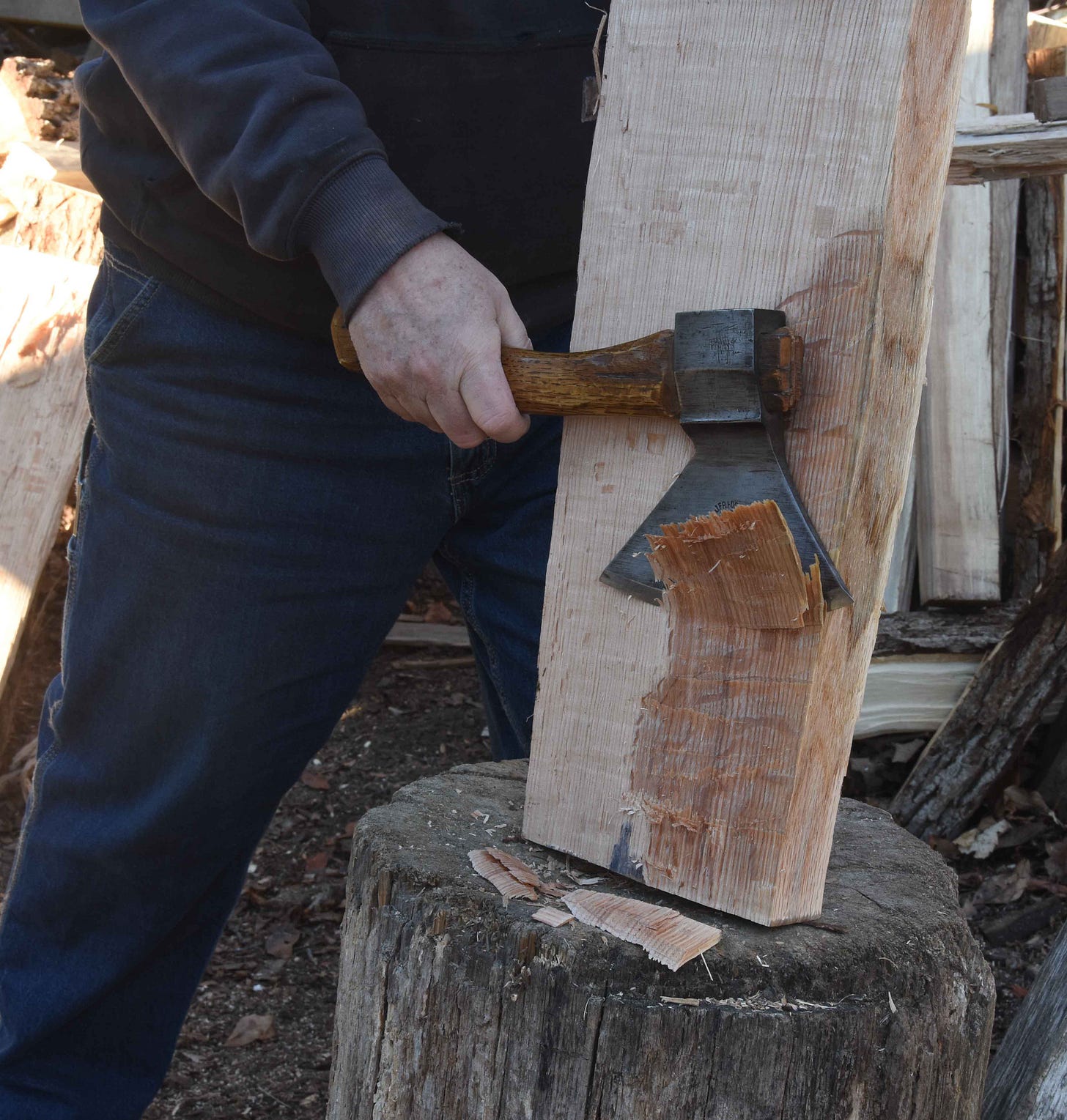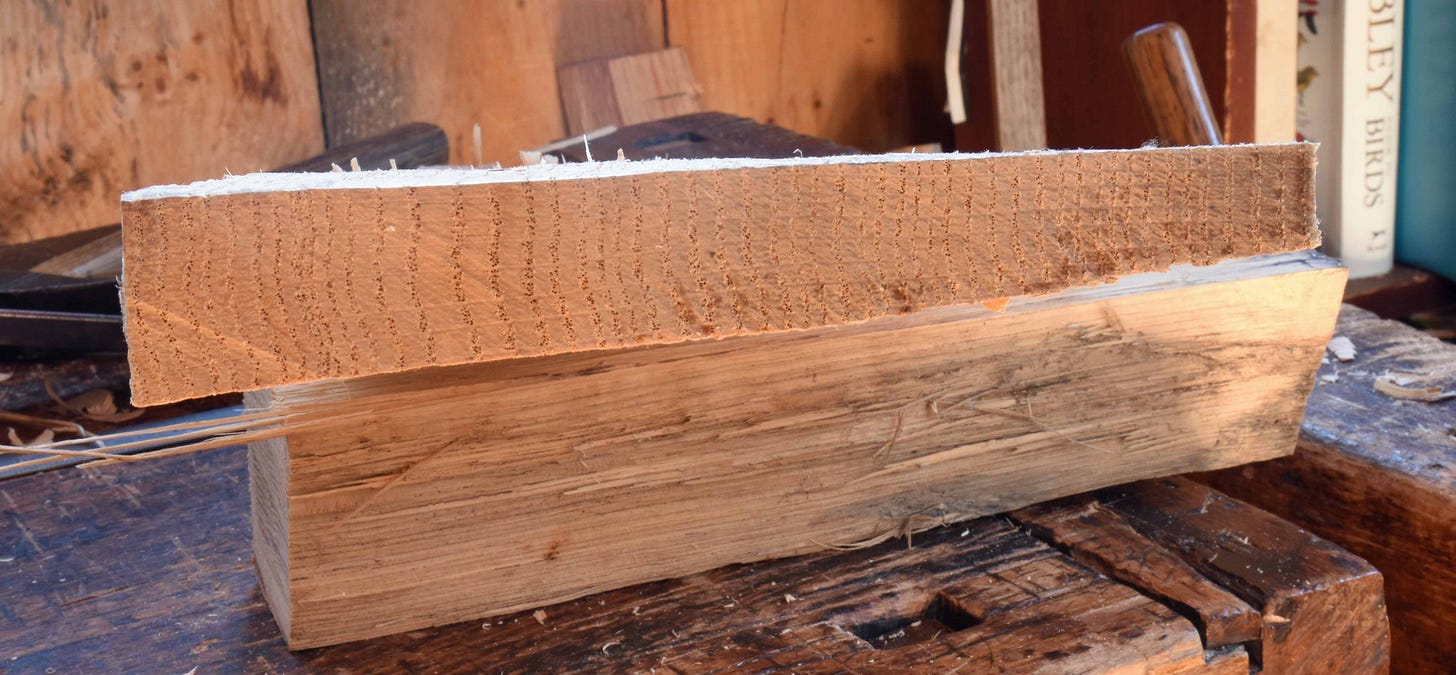[my house has a new blog - my wife began one about her knitting. If you know a knitter/fiber arts person, maybe they’d like to see it. https://maureenerichard.substack.com/ ]
I’ve mentioned that much of my recent work has just been making boards out of the logs I’ve bought lately. So today is a good chance to look at how I go about that and what I’m looking for and looking at when working up fresh oak. It’s mostly about the radial plane. I’ll back all the way up to when I first got involved with this work. Jennie Alexander had been studying 17th century joined furniture in museums, principally Winterthur Museum in Delaware. There she recognized that the oak for a joined chest was split from a log, just as she did with her chair parts. Ring-porous woods, like oak, ash, hickory and some others, split most easily along the radial plane. They split well in the tangential plane too - but easiest radially. I remember JA showing a bunch of us a slide talk with emphasis on the tapered, radial orientation of a chest’s “stiles” (the posts/legs). She even coined a word for the shape - a “truncadon” - a truncated pie-shaped chunk of oak.
The radial plane is chosen for a couple of reasons - one being the ring porous woods (mostly) split easily in that direction. But it’s also for stability. The resulting stock shrinks less across the radial plane than it would across the tangential plane. If you are accustomed to sawn stock, think quartersawn boards. The growth rings are perpendicular to the board’s face.
That’s all well and good- especially when you get that rare, perfect log that splits easily but also flat. Not all logs will do that, not by a long shot. The small walnut log I’m working lately is dead-flat on its radial plane - but the log is so small the radially-oriented boards are at most 4” wide.
Last December I got part of a near-perfect red oak. It split almost just by looking at it. Clean, easy splits - and very wide - this 40” long section is almost 10” wide in the heartwood.
That white sapwood out near the bark is trash - it gets split off first & thrown in the firewood pile. If you enlarge that photo, you’ll see the fibers/grain running almost perfectly straight when sighted against that straight edge.
BUT - the radial plane is twisted - I propped a section up on the chopping block so I could sight down its radial plane with the camera. Now, what to do?
Simple. Get out the axe.
I use a single-bevel “hewing hatchet” for this sort of work. Other names for it are broad hatchet, joiners hatchet, side hatchet - probably more too. It’s not flat on its back, but slightly slightly curved. I take some heavy cuts into the thick outer end of the twist, a series of evenly spaced cuts, coming up about 3/4 of the board’s height. For these scoring cuts, the hatchet is coming to the board at angle.
Next, it hugs the face of the board and slices down into those scored cuts, hewing off the excess.
After hewing, when I sighted down the surface, it was closer to being in a plane. (sitting on a scrap piece to level it off for the photo.)
Keep reading with a 7-day free trial
Subscribe to Follansbee's Substack to keep reading this post and get 7 days of free access to the full post archives.









